Design Without Borders – The Universal Language of Creating Experiences
There are many things in this world that transcend boundaries, like art, literature, human rights, science, food, the environment, and emotions. While I count many of these among my passions, I’d like to focus on one – design.
Imagine the chaotic, high-energy atmosphere of a store compared to the respectful, serene healing spaces of a doctor’s office. At first glance, they might seem worlds apart, but look closer, and you’ll find that design – specifically human-centered design – is the bridge that connects them.
Human-centered design isn’t confined to one industry or another; it’s a universal language that enhances the human experience no matter the location, application, or size of a space. Let’s talk about some commonalties:
The Art of Creating Experiences
Human-centered design is all about creating experiences that put people…humans… at the epicenter of the experience. Whether you’re stepping into a captivating retail space, enjoying a relaxing stay in the hospitality sector, optimizing your workspace for productivity, or seeking wellness in a healthcare facility, the essence remains the same. It’s about making people’s lives better by delighting, informing, and engaging them and their unique needs. It’s about designing environments that heal, guide, uplift, or fuel productivity.
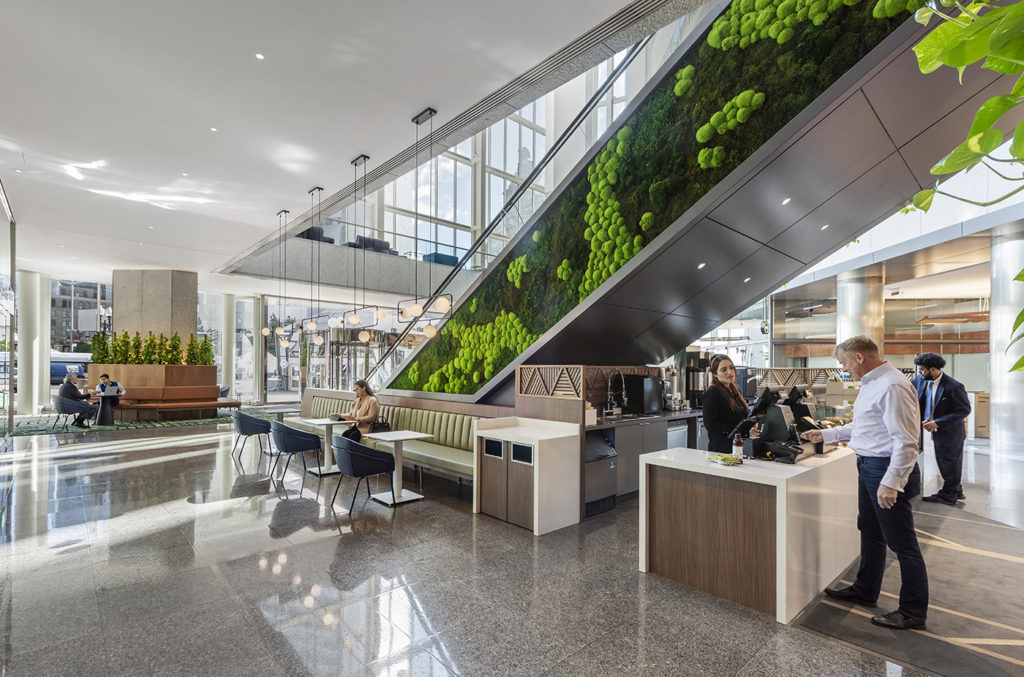
One Financial, Boston
Personalization and Human-Centered Design
Personalization is a fundamental component of design, enabling the customization of the experiences to individual preferences and needs. Brands that incorporate personalization into the design of their experiences see a significant 10-20% increase in satisfaction. This trend is evident across various industries, illustrating the shared human desire for recognition and individualism in a “me”-centric world.
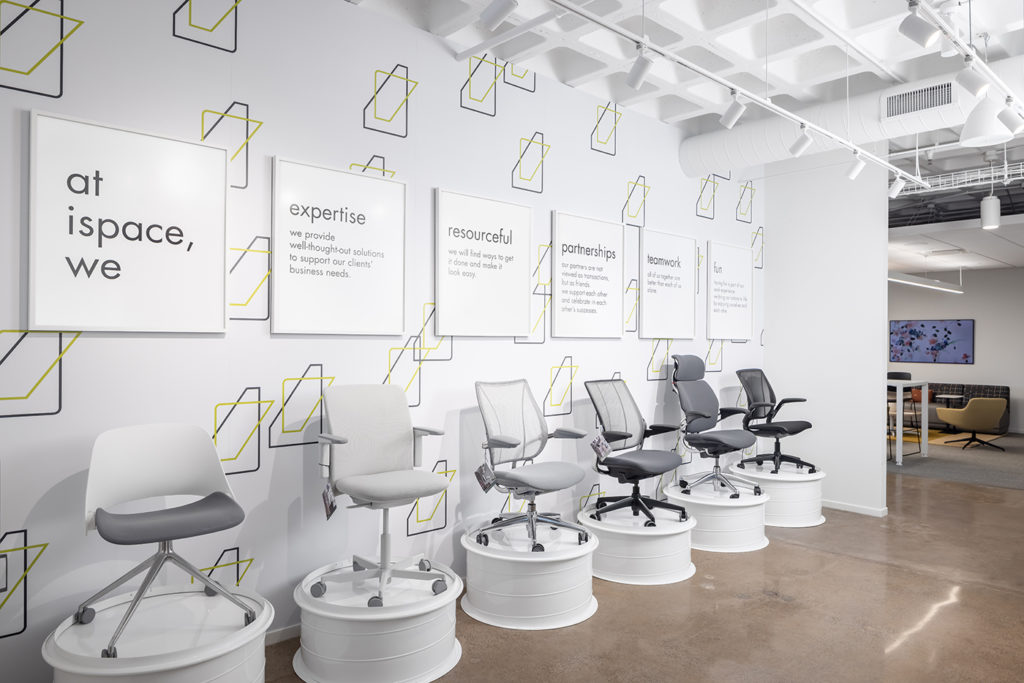
ispace, Minneapolis
Seamless Journeys and Wayfinding
Have you every struggled to navigate a hotel, searched for the restrooms in a workplace, been lost in a store, or been challenged to find your way around a hospital? Effective wayfinding ensures visitors can effortlessly navigate spaces, whether they’re hunting for latest gadget, on their way to a doctor’s appointment, or navigating the new hotel property where they’ll spend their vacation week. According to the International Sign Association, a well-designed wayfinding system reduces confusion and stress levels, enhancing the overall user experience.
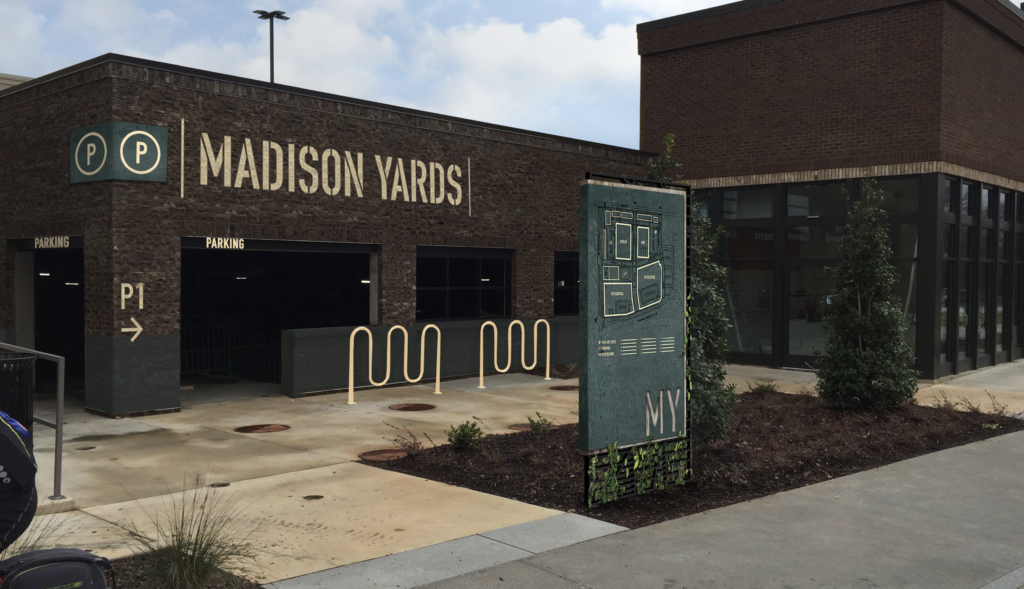
Madison Yards, Atlanta, GA
Tech as an Enabler
Technology has transformed from a simple tool to an essential part of our everyday lives. It’s the thread that ties us to our modern world, shaping our global experiences and interactions. This tethering of humanity to technology is a fundamental aspect of design; we rely on it as our primary source of information, entertainment, and communication. How tech is integrated into the experience can and should range from loud and visible to calm and discovered.
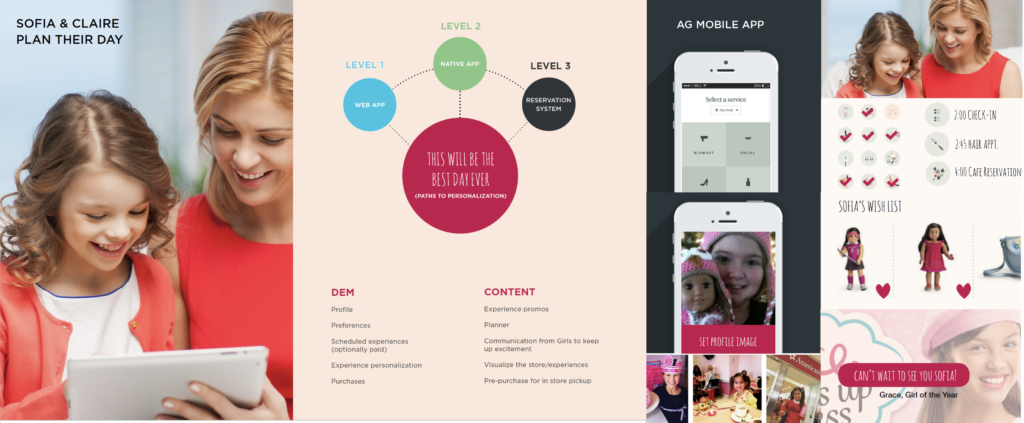
American Girl, Various Locations
The Power of Cross-Collaboration
In today’s interconnected world, it’s increasingly clear that collaboration across disciplines is essential to drive design innovation. Designers, architects, and strategists from all sectors bring distinct perspectives, sources of inspiration, and best practices, opening channels of communication and sharing that unlock the potential for growth, innovation, and positive change. This collaborative dynamic is a testament to the versatility of design principles that prioritize people at the center of every experience, sparking new, exciting possibilities that can shape a brighter, more connected future.
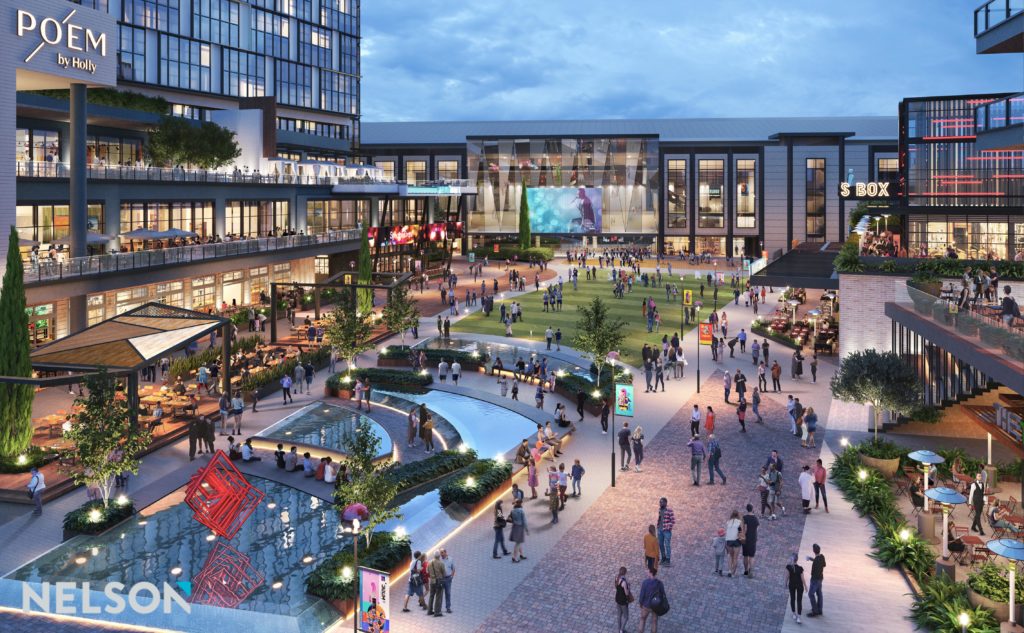
The Gathering at South Forsyth, Alpharetta, GA
As a collective design community, we share a fundamental truth that transcends the boundaries of our individual industry sectors: we have more similarities than differences when it comes to creating, designing, and building experiences that are not only brand relevant but also engaging for us – humans. Whether we’re optimizing workplaces, shaping healing healthcare spaces, crafting relaxing hospitality getaways, increasing productivity in a warehouse, or shaping retail, the core principle remains constant. It’s about putting people, their needs, and their emotions at the center of our creative process. This shared commitment to enhancing the human experience unites us in a common mission, as the universal language of design thrives on its ability to inspire, innovate, and transform the world around us.
Fluid Retail: Experiential Entertainment
As retail continues to rapidly transform, we’re looking beyond the immediate industry, to environments and concepts inspiring the retail of tomorrow in our latest Fluid Retail series. Today’s consumers engage with brands in a fluid manner. The traditional sectors of the retail, restaurant, hospitality, and entertainment have blurred as the consumer-desired experience has become a mosaic of expectations, influenced heavily by engagement, access, and authenticity. Embracing these new expectations presents brands with a greater opportunity to differentiate, cross-sell and expand the breadth of their brand experience.
This segment will focus on entertainment concepts—from brand name skate parks, to experiential beauty studios, that have adapted to new consumer behaviors, paving the way for new experiences of the future (and while you’re here, check out other our other segments: Hospitality & Wellness and Food + Beverage):
RazerStore
Global gaming brands Razer has unveiled its first European flagship, a 3,700-square-foot space dedicated to interactive experiences. The distinctly dark two-floor space features a shop floor, play-test area where consumers can try out any combination of Razer’s gear, and lower ground floor gaming zone, complete with an enclosed streaming booth, connected consoles and ten battle stations. There will also be weekly tournaments, workshops, and boot camps in the future.
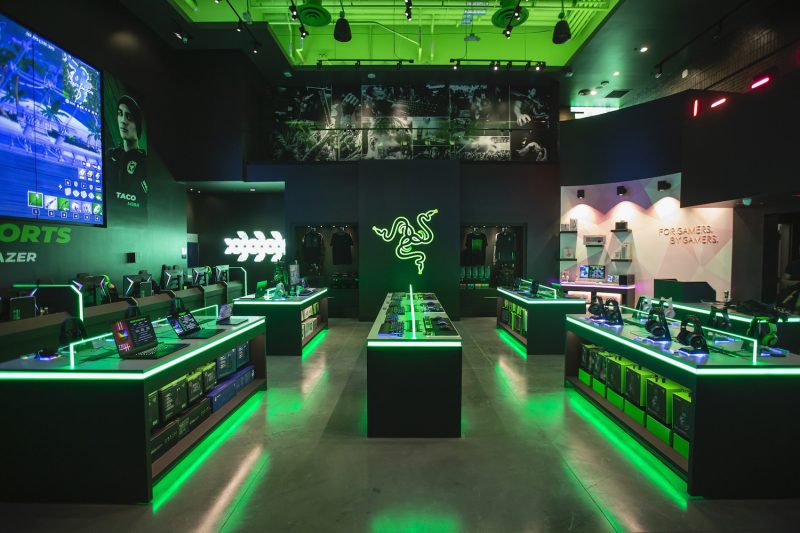
RazerStore, London, UK
Vans Skate Space
Vans Skate Space 198 was designed to offer a unique skate experience both beginner and experience boarders. As consumers flock to brand sponsored spaces, Vans hopes that the space will host competitions, art exhibits and music events in the future.
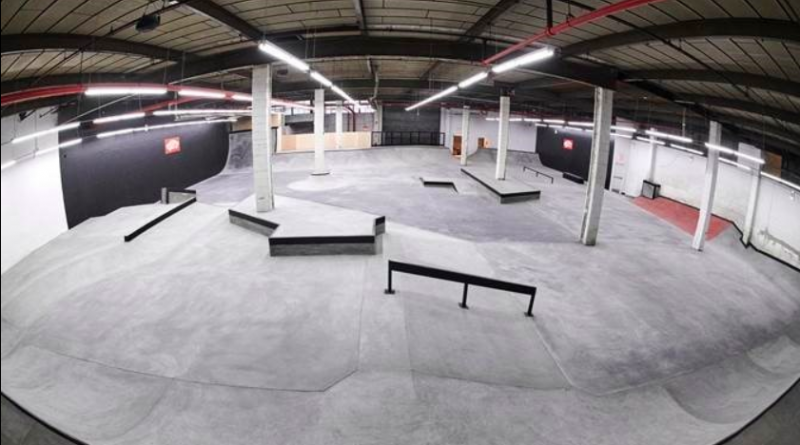
Vans Skate Space, Brooklyn, NYC
CAMP Flagship
Built to engage and inspire young families CAMP’s newest flagship location in Hudson Yards NYC has a canteen, an interactive space for play and shopping, and a theater for activities and programming for kids. Different from other CAMP stores that operate with rotating themes, this signature store features the brand’s BaseCAMP theme, bringing families the nostalgia of New England summer camps no matter the time of year.
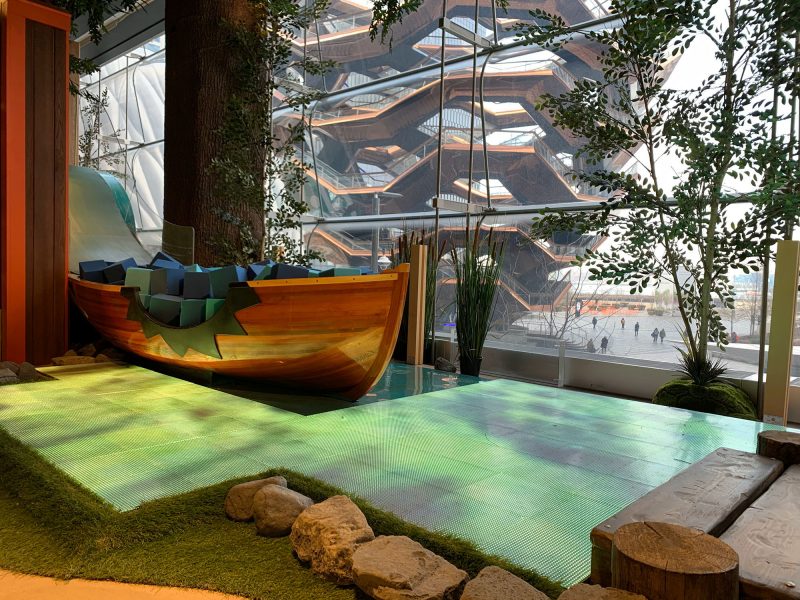
CAMP, Hudson Yards NYC
Zalando
European fashion e-retailer Zalando opened a Berlin Beauty Station to act as a multi-use store that doubles as an interactive art gallery, salon, or photography studio. Showcasing IRL tutorials and producing educational content for in-store tablets or online streaming, the store offers fans beauty focused entertainment experiences.
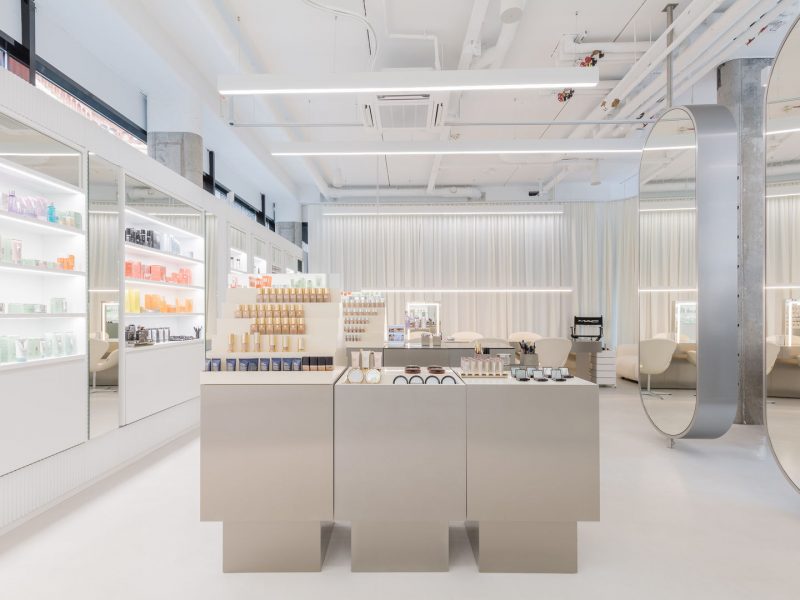
Zalando Beauty Studio, Berlin, Germany
Off-White Miami Flagship
Fashion designer and streetwear icon Virgil Abloh has redesigned Off-White brand’s Miami flagship to flex into a multipurpose event and fulfilment center when not in regular retail mode. The space’s new design navigates the challenges of reimaging the physical brand space as the popularity of e-commerce, accelerated by the pandemic, grows.
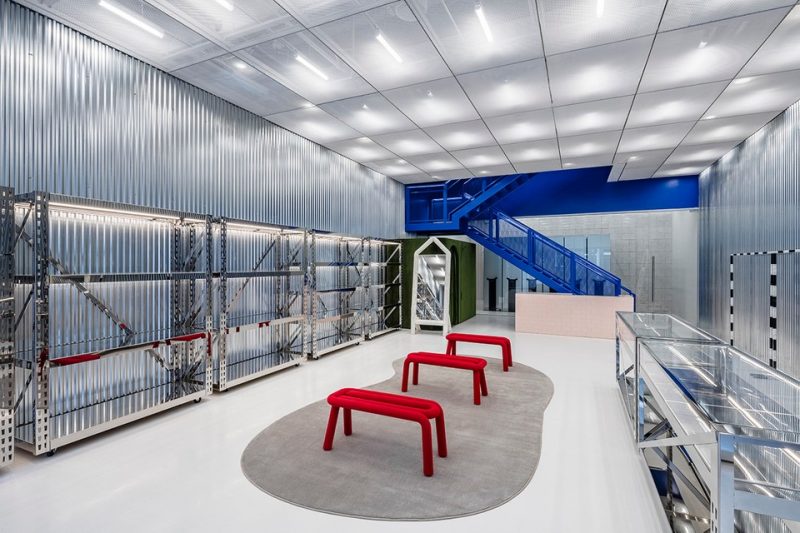
Off-White Flagship, Miami, FL
Remembering People When Assessing And Transitioning The Workplace
The International Facility Management Association’s (IFMA) Facility Fusion conference is an annual gathering of industry innovators in the facility management world, exchanging ideas on the fast-paced, ever-changing nature of the workplace. As a specialist in change management, and one of the founding members of the Workplace Evolutionary leadership team for IFMA, I chose to present a topic I feel is a pertinent reminder of why we do what we do as workplace strategists, in a time of rampant technological advancement and aggressive shifts in the real estate market. In the end, it’s all about co-creating a better work experience, leading by example, and engaging people in the planning and design process in meaningful and timely ways with empathy. Forgetting about the end user in the process takes the eye off the target, misses key opportunities for engagement and can have a detrimental effect on the result.
In addressing “remembering the people” from a design perspective, I posed five simple questions:
- What are we designing?
- Why is “change” the verb?
- How do we engage people?
- When do we engage people?
- Who leads the change?
What are we designing?
The workplace is not a thing, it’s an experience! There’s been a fundamental shift in expectations about what we as designers are actually designing. This workplace evolution is best summarized as a shift from the workplace-as-a-product or thing (e.g., office building) to the workplace-as-a-service (ala WeWork) and currently toward the workplace-as-an-experience. So, we are now in the business of designing experiences which raises the bar on expected outcomes well beyond a product or a service, and redefines the involvement of end users as consumers in a co-creation process.
Why is “change” the verb?
When we hear the phrase “change management” most people understand it to mean managing change. Next time you hear the phrase “change management” simply reverse the verb and restate it as changing management! That’s what I mean by “change is the verb!” New work environments that support new work styles require new management styles. New management styles require leadership. Putting a hip or cool “work café” into a workplace solution will not be successful unless employees see managers leading the way by using it themselves. Management needs to model desired work behaviors. All eyes are upon what they do more so than what they may say. That’s why we emphasize new work behaviors with changing management style and behavior as the key element.
How do we engage people?
When trying to learn a new language, skill, or behavior, learning is accelerated when people can relate it to a topic about which they are passionate. Whether learning language, writing, reading, or math skills, this is referred to as interest-based learning. If we want people to adopt innovation or adapt their work behavior to a new environment, we need to understand their interests and concerns as individuals. Everyone is not affected by change in the same way, nor do they adapt at the same pace. So we need to identify stakeholders as audiences with unique interests and concerns. For example, managers moving out of dedicated private offices into an open plan environment are affected very differently than people already accustomed to working “in the open.” We need to engage people and their interests and concerns in ways customized to what’s uniquely at stake for them.
When do we engage people?
We strongly advocate the principle that the change management process must run from beginning to end in parallel and integrated with the design process. Change is not something we “sell” to end users once a design solution is already fully developed without their input. Genuine engagement must go well beyond persuasion and influence used to get people to accept innovative ideas involving new choices about how, when and where to work. The change process begins during the pre-design “programming” stage engaging end users in a dialogue about imagining alternative workplace solutions that better support the way they work. When people see their ideas reflected in proposed design concepts, they don’t need to be “sold” on new ideas.
Who leads the change?
Leading requires changing hats. Trying on a hat makes us more aware of what fit and style make us feel more or less comfortable. We have more to learn about why a hat makes us feel uncomfortable. Trying on hats other people wear allow us to understand them and ourselves better. When we think of hats we wear similar to roles we play, sometimes simply changing hats (or roles) requires empathy and makes all the difference in bringing about and being open to change. Whether you’re a designer embracing workplace as an experience, a manager embracing a new management style and modeling new work behaviors, a facility manager responsible for maintenance and operations, or any other player in the workplace creation process, we will all succeed more together by trying on the hats of others. This empathetic process is what we refer to as human-centered design. Mahatma Ghandi said it best… “You must be the change you want to see in the world.”
Fluid Movement: Modular seating uses form to create function
With its ability to transform to meet a variety of needs, modular seating has become a great solution for hotels seeking a stylish and economical way to accommodate evolving guest needs. Read more here.
Adaptability, Comfort, Safety: Bringing back the open office post COVID-19
NELSON Worldwide’s Holly Williamson shares insight with Mann Report on how open offices are crucial for mentorship in the workplace.
RestaurantNews: Chester’s Chicken Debuts Store Redesign At Three New Locations
Chester’s Chicken, the cult-favorite fresh fried chicken quick-service restaurant concept with more than 1,200 locations and over 50 years of success, is introducing its first store redesign in nearly 20 years at three new locations – Durant, Oklahoma; Monroe, Louisiana; and Elk Grove Village, Illinois. The new look features a fresh color palette, updated menu boards, and modern architectural and interior brand elements throughout – designed to create a better connection between the customer and Chester’s famous fried chicken, prepared fresh in store throughout the day.
The elevated in-store experience is the next phase of Chester’s brand refresh, following the 2020 launch of the company’s new website with an enhanced library of marketing and training tools for franchisees, as well as a new, simplified logo that focuses on the lovable Chester the Chicken mascot. Within the past year, Chester’s has also introduced new branded packaging and overhauled its digital menu board design. Read more here.
Regional Roundup: Industry Trends of the West Region
Today, people move fluidly from experience to experience resulting in everchanging environments that are shaped by the lifestyles and needs of people and communities everywhere. From coast to coast, our teammates are at the forefront of transforming environments and are on the pulse of the trends that define them. In our latest Regional Roundup series, we’ll be connecting you with NELSON teammates from across the country, both new faces and long-time leadership, to explore and highlight regional trends and shifting consumer expectations, across the industries we serve.
This week, we’re introducing you to our West region teammates:
- Kathy Craft, Industrial Practice Leader | NELSON Seattle
- Mark Levine, Managing Director | NELSON Los Angeles
- Tom Bowen, Market Leader | NELSON Seattle
Industrial
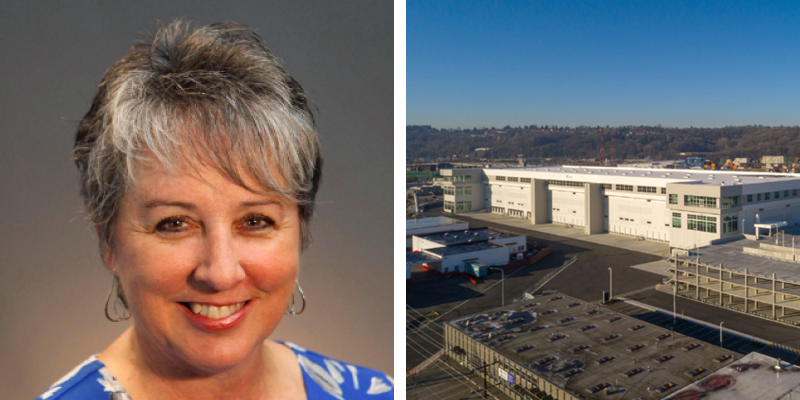
TRENDS:
Today, e-commerce is more than 30% of all retail shopping and we expect that to continue to drive demand for all types of industrial space. Specifically, we are seeing an increase in demand for freezer/cooler space, vertical indoor controlled growing environments, and an increased relationship between technology and the built environment. As large companies publish goals and implement strategies for net-zero carbon we will continue to see more electrification of fleet vehicles, renewable energy implementations, and the use of technology to minimize process and delivery inefficiencies.
CHALLENGES:
As the demand for industrial land, whether for new development or repositioning of existing, continues to increase we see vertical industrial development to make more sense. We are working with structural engineers and general contractors to come up with a way to reduce construction costs while increasing the efficiency of cube space functionality in a vertical environment. 50% of the cost of e-commerce is transportation. I think we will see more creative ways to get the product to the consumer in both locations of facilities and delivery methods.
WHAT’S NEW FROM NELSON:
Our latest project within Prologis Georgetown Crossroads—a 3-story industrial development—is 100% leased to two big e-commerce players. Each is providing very different sized products for last-mile delivery to the consumer. The proximity to both major transportation routes, I-5 & Hwy 99, as well as proximity to a high density of customers is key in addition to the flexibility this facility offers.
Kathy Craft’s experience includes 30 years of award-winning architectural work with local, national, and international developers of all sizes. The driving force behind NELSON’s industrial practice, her portfolio includes a pioneering industrial project for Prologis, which was the first multistory warehouse of its kind in the United States at Georgetown Crossroads in Seattle.
Mixed-Use
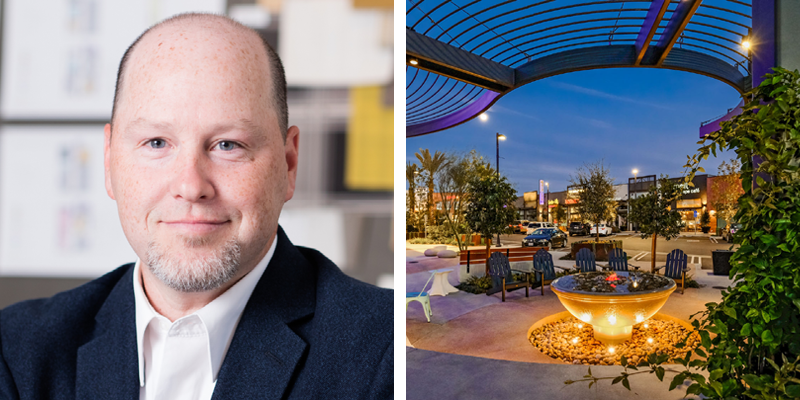
TRENDS:
Across every sector, our clients are challenging the traditional vision of development in the way they approach adding value to a property. For mixed-use properties, the expectation of what a town center or mall, or even apartment building offers can be vastly different now. From outdoor spaces to enhanced convenience and connectivity, this brings exciting new possibilities to communities that are starving to be included.
CHALLENGES:
It may be incremental, but I see city jurisdictions working harder to open up opportunities and work with developers who bring an aspirational vision to their projects. The last 18 months have been challenging in a lot of ways for our communities across the region and country. I see a groundswell to the challenge of how we move forward. Not just to be different, but to be better.
WHAT’S NEW FROM NELSON:
Our team is in the first stages of developing a mixed-use master plan for a B-level mall property. Currently, the location doesn’t garner that much regional attention, but when we are done I think it will serve as an incredible example of responding in a very personal way to the community’s needs and aspirations. As we continue to garner more of these types of projects, the challenge is to stay at the cutting edge of transforming communities into better, more desirable, and resourceful places for those in and around them.
Also, we are working with a local Los Angeles developer who owns several small retail buildings in a highly regarded retail district. We are studying conversions to small mixed-use retail/workplace designs that will be more attractive in a post-COVID market.
For 20+ years, Mark Levine has lead design teams through master planning, retail prototype development, domestic and international retail programs, and various retail mixed-use and commercial projects. Mark has completed projects for clients ranging from retailers like Ford Motor Company, JC Penney, and Chase Bank to developers including Forest City, Caruso Affiliated, and General Growth Properties.
Asset Strategy
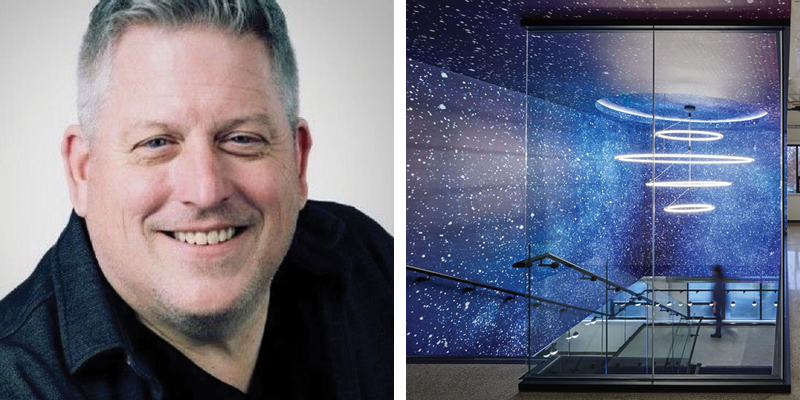
TRENDS:
I am seeing a trend of what I like to call “The Big Mash-Up.” Post-COVID, there will no longer be a separation between commercial, workplace, retail, hospitality, healthcare, manufacturing, etc. With this idea, buildings are becoming multi-faceted facilities that are used for working, shopping, dining, fitness/wellness, and much more. This has brought a new meaning to amenities and we should be looking at developments as “integrated-use” projects. This means that the design and layout of the building will change over time, so ultimate flexibility is the key.
CHALLENGES:
It is more important than ever that an environment celebrates brand. We are seeing opportunities with landlords, REITs, and developers to approach their office buildings as their own brands, especially when they are repositioned, reconfigured, and re-tenanted. Preparing a brand strategy for a building or asset plays directly into the marketing, leasing, and valuations of the building. It also brings in all of our areas of expertise including Strategy & Insights, Brand Positioning, EGD, Interior Design, Architecture, etc.
WHAT’S NEW FROM NELSON:
For one of our latest west coast projects, our design team was challenged with transforming an office and manufacturing space into a dynamic workplace that transports employees to a vibrant and inspiring destination, always being reminded of the company’s mission. Located in Seattle, this two-story, 71,000-square-foot facility features equal parts office and manufacturing space, complete with a café and social lounge, and a variety of meeting spaces.
With a focus on innovation and customer-centric design, Tom Bowen fuels growth in the technology, life sciences, mixed-use, commercial and retail sectors. With 20 years of experience in the industry, his experience includes working with complex and scalable account management, organizational development, team building, and business unit performance.
Curious to learn about what’s going on in other regions?
Stay tuned for more Regional Roundups
Yankee Candle
Home Page
Interiors + Sources: Creative Details for Office Renovations
Taking an abstract approach to environmental graphics, NELSON Worldwide installed pipes throughout Corix’s new space to serve a dual purpose: vibrant decor and creative wayfinding. Each pipe color represents a core market the company serves and acts as a gentle and organic guide, leading employees and guests in the right direction. Recently relocated from its suburban headquarters to a new downtown Chicago location, Corix’s headquarters now unifies each of the utility company’s dedicated functions—water, wastewater and energy. Read more here.